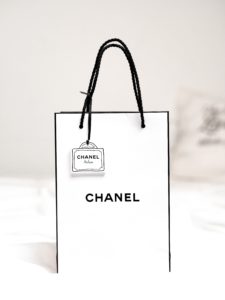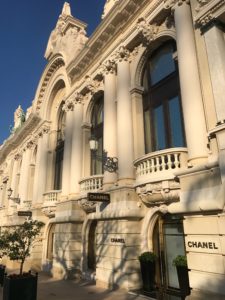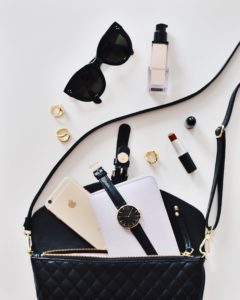From Jackie to J.Lo, the Chanel Club Lives On
Published on February 23, 2022, at 8:11 p.m.
by Schuyler Rosson.
For decades, Chanel’s Classic Flap Bag has dazzled on the arms of fashion’s most notable figures, serving as a staple in the wardrobes of Jackie Kennedy, Elizabeth Taylor and Jane Fonda. The handbag is easily identified by a pair of interlocking C’s and quilted caviar calf’s skin with a “hands-free” chain, providing functionality without sacrificing style. Through price increases and purchasing limitations, Chanel has secured a customer base that, even after 70 years, is still impressively selective.

Originally designed in 1955, the bag revealed an intimate glimpse into the glamorous yet daring aura of Gabrielle “Coco” Chanel. The showpiece is delicately designed to hold Coco’s favorite tube of rouge lipstick and even conceal love letters from her infamous affair with Captain Arthur Edward.
Although reimagined by Karl Lagerfeld in 2005, many of the bag’s key characteristics remained untouched. The price, however, has undergone the most drastic of changes. In 1955 the Chanel Small Classic Flap Bag was priced at $200; today it retails for a whopping $8,600. Since 2019, the price of the bag has increased by nearly 60 percent, with continuous price jumps over the past two years. In 2021 alone, the bag climbed another 15%, landing it at its current price point, which is only $100 short of the Hermès Birkin 30.
A Chanel spokesperson attributed the drastic price changes to “largely a result of COVID-19 disruptions” and “unspecified exchange-rate fluctuations.” Yes, even Chanel can’t outrun supply chain and labor shortages. The pandemic has caused the importation of lamb and calf’s skin to become increasingly more difficult, as businesses attempt to navigate the ever-changing protocol for in-person operations. The French fashion house also implemented purchasing limitations, restricting customers to buying only one Classic Flap per year.

However, market analysts and experts aren’t as quick to blame Chanel’s price increases solely on COVID-19. Many argue that the inflation could be part of a carefully crafted strategy to maintain exclusivity and secure “it-bag” status. Within the past two years, Classic Flap sales have skyrocketed alongside many other signature styles, including the 1.12, 2.55, Boy, Gabrielle and Chanel 19. Loyal customers continue to splurge, buying in fear of another price increase and eagerly joining the increasingly selective consumer base.
In an interview with CNN, Chanel’s president of fashion, Bruno Pavlovsky, revealed that exclusivity is a main focus of the design house, saying, “We try to bring through the boutiques the best value of the brand … our idea is not to open lots of boutiques but to be able to give, through the existing one, the best value and the best service to our customers.” Chanel focuses on enriching the shopping experience, ensuring that attention to detail is consistent globally, whether shopping in Shanghai or Paris.
Chanel’s Instagram also serves as an avenue to reinforce exclusivity, following only two accounts, Chanel Beauty and le19M. According to Grazia, le19M is a Parisian design hub and gallery dedicated to celebrating Chanel’s rich history and craftsmanship.

As noted by Bloomberg, purchasing limits and price hikes have only made the bag even more desirable, a concept economists are familiar with. Chanel is not the only luxury brand controlling access to maintain exclusivity. Hermés has implemented similar tactics to attract elite consumers and solidify its reputation as the most exclusive of luxury brands. In turn, customers have become more loyal, eagerly buying in before the next price increase.
Chanel proves that as prices increase so does consumer demand, resulting in the Classic Flap becoming the pinnacle of modern luxury. However, maintaining status comes at a soaring expense.




